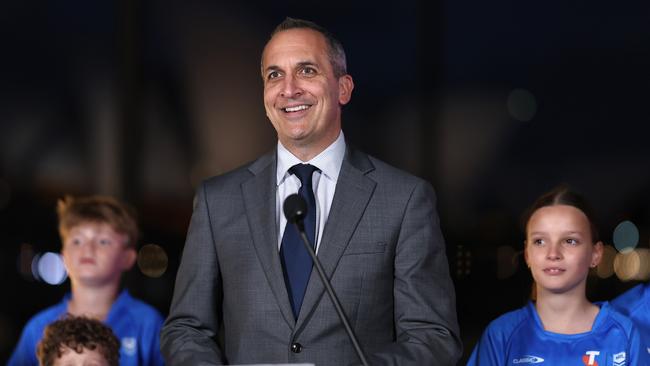NRL hunts for more revenue and assets, but will expansion fees be part of the financial mix?
Rugby league has had a big 2024, but a vital off-season looms for the code’s business plans – including expansion – ahead of a new broadcast rights deal and asset purchases in the next two years.

Sunday evening’s NRL grand final may be just as important from a financial perspective as another event for rugby league later this month.
The Australian Rugby League Commission governing body could announce the Western Bears consortium as the NRL’s newest team within two weeks of the season-decider between the Melbourne Storm and Penrith Panthers.
There are also moves for a new team from Papua New Guinea underway, backed by $600m in sports diplomacy funding from the Albanese government, and the NRL aims to eventually add another club in Australia or New Zealand for what would then be a 20-team competition.
In an interview with The Weekend Australian about rugby league’s financial situation, ARLC chief executive Andrew Abdo said he was keen for the code to charge expansion fees for the new teams, and that the league is aiming to have $300m in net assets.
But even more importantly will be negotiating a new broadcast deal to kick in after the league’s current arrangement with Nine Entertainment and Foxtel expires at the end of 2027.
A new team like the Perth-based Bears, formed from the old North Sydney Bears that exited the NRL in 1999 via an ill-fated merger with Manly-Warringah, will help generate more revenue in two ways, Abdo says.
One is via more revenue in the code’s next TV deal from providing broadcasters more content.
“We are the most watched sport in Australia and we are delivering value for our partners. We have bold ambitions for the future and we need to get the right value for our rights,” Abdo says.
“So we think we have a lot going for us and adding another team does add another fixture [each week] and another fixture in a new market adds commercial value.”
The second facet, Abdo hopes, is from charging the new teams an expansion fee to enter the competition, which happens in other competitions around the world.
Which may prove more complicated.

Abdo says in any business case for expansion “you want to create value … and be strategic about what markets you go to.
“In terms of a licence fee you would think these days it is commonplace in sport and appropriate. Ultimately though you want clubs that are well funded and have created a strong connection with the community. But it is essentially a fee for our IP (intellectual property).”
The consortium behind the Bears, including business figures from Perth and Sydney, have been told they will be required to spend $30m on the team, including local development and infrastructure.
But it is not clear if documents provided to the consortium set out the need to pay a fee of potentially tens of millions to join the NRL. It is a matter likely to be thrashed out in meetings just after Sunday’s grand final. Existing NRL clubs would likely want a slice of any expansion fee, and some of the $600m from the PNG team funding.
When the Brisbane-based Dolphins were announced as the NRL’s newest team in late 2021 (it entered the competition in 2023), the NRL did not charge an expansion fee but there was a requirement to spend $2m annually on men’s and women’s pathways and participation.
Expansion fees are common in other codes: the A-League’s newest club, Auckland FC, paid $20m to join that competition.
Meanwhile, the NRL – which had $250m in net assets a year ago – is strengthening its balance sheet by buying assets such as the three hotels it now owns and keeping some of its holding in cash and other liquid investments.
“We want to get to $300m assets at the end of the [broadcast] cycle [in 2027],” Abdo says. “That means commercial assets, cash and deposits that we make good returns from on fairly low risk strategies.”
Abdo says the NRL’s revenue this year will be between the $700m it achieved last year and $750m.
Additional revenue will come from the income-generating assets, the expansion of the women’s side of the game and then overseas from the US, where the NRL will host two matches in Las Vegas again next March, and the UK.
When asked if the ARLC would consider buying the mostly UK-based Super League, Abdo says: “We will work with them to promote the growth of the game, potentially we might look at NRL playing matches in the UK or something more formal.”





